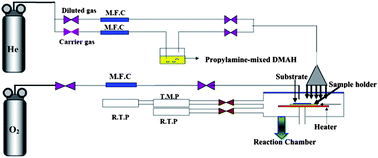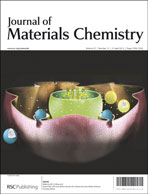Metal-organic chemical vapor deposition of aluminium oxynitride from propylamine–dimethylaluminium hydride and oxygen: growth mode dependence and performance optimization†
Abstract
AlOxNy thin films have been successfully obtained by new metal-organic chemical vapor deposition (


 Please wait while we load your content...
Please wait while we load your content...